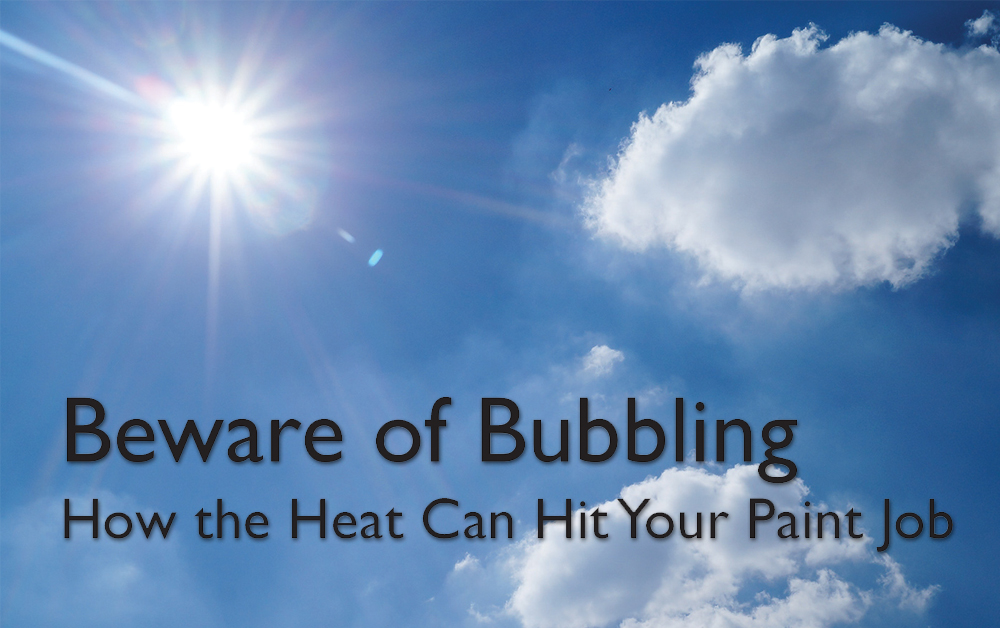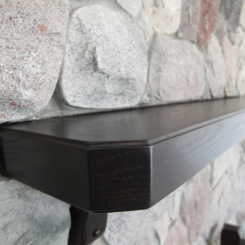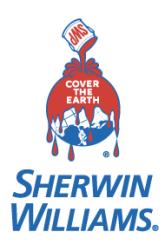How the Heat Can Hit Your Paint Job
24 April, 2019
24 April, 2019

By Scott Burt
For me, spring is a time of reflection and preparation. On the coldest of days, I think a lot about the hottest days. (I wonder which extreme I complain about the most. It is probably the cold.) In particular, this spring I’ve been reflecting on where we left off with our exterior program last year and how we can gain even the slightest improvements in quality and efficiency this season. I’m working to recall issues that caused backwards motion or rework on exterior jobs. It’s in these improvements that profits are to be found.
It is the nature of a good painter to focus on what went wrong, no matter how small. After all, we have plenty of time for reflection while we are painting. Here’s where my reflection led me…
Deep base considerations
Last season, we did a bunch of work on custom homes with dark exterior trim colors. Deep base trim paints are a sharp feature on a home exterior, but they come with some risk and unique considerations of which painters should be aware.
It doesn’t really matter which exterior paint manufacturer’s product you are using on exterior trim in the summer, there are always weather-related obstacles in delivering this type of service.
One finish concern is the possibility of paint bubbling or blistering on the trim surfaces that we paint. You know how it is on a repaint and freshen up job. You clean, prep, scuff sand, skim and caulk surfaces. You lay down a couple of coats of your preferred exterior trim paint. Then suddenly later the same day or the next day, you see bubbles form in your well-applied coating as the surface warms up.
This is an issue that is pretty specific to colors other than white: the deep bases. While 90% of the painted world — all surfaces that we paint on interiors and exteriors — is white, we have to know how to master the custom color realm on exterior paint jobs.
I am not going to pretend to be a chemist on this matter. However, decades of observation have taught me that surface temperatures and weather awareness are the keys to success in getting exterior custom colors to lay down in the summer heat.
Chemistry 101
Remember, dark colored paints are usually thinner bases that hold more pigment than white bases. And all colors are measured and rated for light reflectance value (LRV), which is the amount of light and heat absorbed by the color. Black, for example, has an LRV of 0, meaning that it absorbs all light and heat that to which it is exposed, and reflects none. So black surfaces can become very hot.
I’ve heard of cases where vinyl siding has been painted with the wrong dark color (too low of an LRV) and the surface actually became hot enough to warp or melt the vinyl siding. That makes LRV pretty important.
Many painters don’t realize that LRV information is located right in the manufacturers’ fan decks, usually on the back of the color sample or in the fan deck glossary. This is a valuable tool to use when helping customers pick dark exterior colors. The higher the LRV, the less risk you will run of seeing the paint heat up and bubble on the surface.
It is also a good reminder for us all to paint in the shade whenever possible. Shade is not just more comfortable for those of us applying coatings. It’s also better for our products’ performance. In very real terms, we might apply exterior products on a summer day when the ambient temperature is 80 degrees Fahrenheit, but it is the surface temperature that is much more critical for painters to observe.
For trim painting, if the surface feels hot to your hand and the sun is on it or about to be on it, save it for another day. This is one preemptive way that painters can reduce risk and avoid costly rework in backward motion.
And I can tell you firsthand that bubbles and blisters are hard to chase in repair mode.
Fixing bubbles and blisters
If you have taken all the recommended precautions and still get paint bubbles or blisters, the best you can do is to wait for the painted surface to cool down. Often, what look like large bubbles when hot, will lay back down on the surface upon cooling, leaving little sign that there was an issue.
Don’t start poking or peeling at them when they are hot and bubbled up. Only address them when cool, if they are still visible. I have found that gently prodding bubbles with a putty knife to scrape them off, then applying light feather sanding is an effective way to settle them down. Then, repaint or touch up the surface in cool, sun-free conditions.
It is important to keep an eye out for this issue. It is one of those things that will go much better if discovered by you rather than discovered by your customer. Most of the time, it is not as bad as it looks. And it is certainly not cause for concern that there will be a large-scale paint failure on your paint job.
If you want to be safe, pick up an inexpensive infrared temperature measurement tool to make sure that surface temperatures are reasonably consistent with ambient temperatures before putting on paint. This, along with a moisture meter, should be part of every exterior kit.
Take care of yourself too
Of course, sun protection is important for you too. Stock up on sun protection before the summer hits. The surfaces of our own bodies are also subjected to all the sun, wind and weather that is happening when we work outside. Protecting ourselves and our painters from weather exposure is another key to maintaining a sustainable workforce for the long haul. Along with dusting off the extension ladders and gear, consider all aspects of what you are rolling out this year.
Have a fun, safe and profitable exterior painting season!
Scott Burt is a freelance writer and owner of Topcoat Finishes in Vermont. He enjoys communicating with paint contractors at topcoatreview.com.




Add new comment